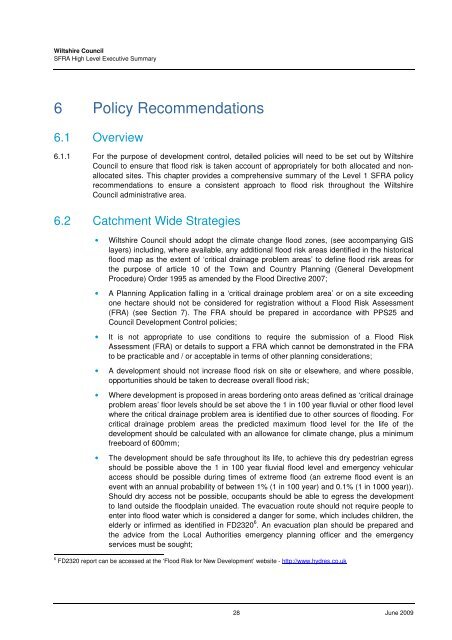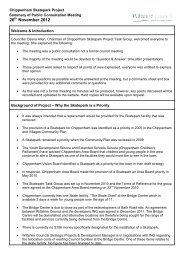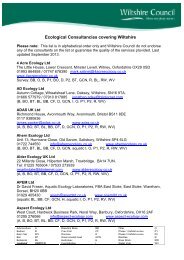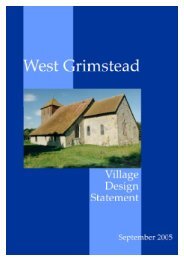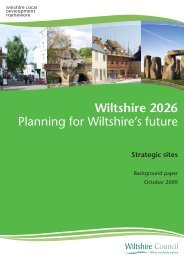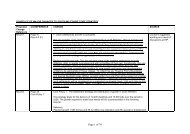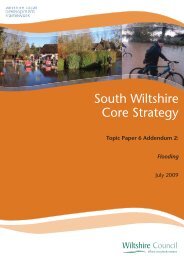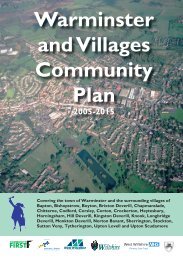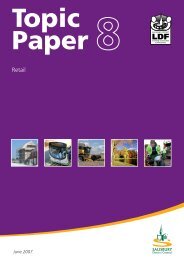Strategic Flood Risk Assessment - Wiltshire Council
Strategic Flood Risk Assessment - Wiltshire Council
Strategic Flood Risk Assessment - Wiltshire Council
Create successful ePaper yourself
Turn your PDF publications into a flip-book with our unique Google optimized e-Paper software.
<strong>Wiltshire</strong> <strong>Council</strong>SFRA High Level Executive Summary6 Policy Recommendations6.1 Overview6.1.1 For the purpose of development control, detailed policies will need to be set out by <strong>Wiltshire</strong><strong>Council</strong> to ensure that flood risk is taken account of appropriately for both allocated and nonallocatedsites. This chapter provides a comprehensive summary of the Level 1 SFRA policyrecommendations to ensure a consistent approach to flood risk throughout the <strong>Wiltshire</strong><strong>Council</strong> administrative area.6.2 Catchment Wide Strategies• <strong>Wiltshire</strong> <strong>Council</strong> should adopt the climate change flood zones, (see accompanying GISlayers) including, where available, any additional flood risk areas identified in the historicalflood map as the extent of ‘critical drainage problem areas’ to define flood risk areas forthe purpose of article 10 of the Town and Country Planning (General DevelopmentProcedure) Order 1995 as amended by the <strong>Flood</strong> Directive 2007;• A Planning Application falling in a ‘critical drainage problem area’ or on a site exceedingone hectare should not be considered for registration without a <strong>Flood</strong> <strong>Risk</strong> <strong>Assessment</strong>(FRA) (see Section 7). The FRA should be prepared in accordance with PPS25 and<strong>Council</strong> Development Control policies;• It is not appropriate to use conditions to require the submission of a <strong>Flood</strong> <strong>Risk</strong><strong>Assessment</strong> (FRA) or details to support a FRA which cannot be demonstrated in the FRAto be practicable and / or acceptable in terms of other planning considerations;• A development should not increase flood risk on site or elsewhere, and where possible,opportunities should be taken to decrease overall flood risk;• Where development is proposed in areas bordering onto areas defined as ‘critical drainageproblem areas’ floor levels should be set above the 1 in 100 year fluvial or other flood levelwhere the critical drainage problem area is identified due to other sources of flooding. Forcritical drainage problem areas the predicted maximum flood level for the life of thedevelopment should be calculated with an allowance for climate change, plus a minimumfreeboard of 600mm;• The development should be safe throughout its life, to achieve this dry pedestrian egressshould be possible above the 1 in 100 year fluvial flood level and emergency vehicularaccess should be possible during times of extreme flood (an extreme flood event is anevent with an annual probability of between 1% (1 in 100 year) and 0.1% (1 in 1000 year)).Should dry access not be possible, occupants should be able to egress the developmentto land outside the floodplain unaided. The evacuation route should not require people toenter into flood water which is considered a danger for some, which includes children, theelderly or infirmed as identified in FD2320 6 . An evacuation plan should be prepared andthe advice from the Local Authorities emergency planning officer and the emergencyservices must be sought;6 FD2320 report can be accessed at the ‘<strong>Flood</strong> <strong>Risk</strong> for New Development’ website - http://www.hydres.co.uk28 June 2009


